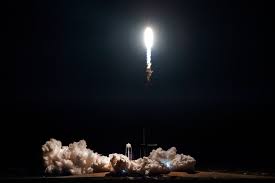The new jet engine works by heating the air plasma with microwaves – it does not require combustible fuel.
Chinese engineers tested a prototype of an engine that works thanks to air plasma, which transfers induction. In the engine’s design, microwaves are used to heat air to a high temperature, after which the hot air comes out under pressure and creates traction.
To measure the traction force and the pressure of the plasma jet at different parameters of the microwave power and airflow rate, the developers used a homemade device. As a result of the experiment, it was demonstrated that with the same power consumption, the thrust force of the new plasma engine is comparable to the thrust of conventional jet engines using combustible fuel. Therefore, such an engine, operating without polluting carbon emissions, can find application in electric aircraft. Now they use screw motors. The results of this work are recorded in the journal AIP Advances.
new engine runs without carbon emissionsThe principle of operation of a conventional jet engine is based on the law of conservation of momentum: the mass of air is pushed back, so the working fluid moves forward with acceleration. A traditional jet engine operates by burning fuel in oxygen at high pressure: the mixture of air and fuel is heated and expelled from the engine under pressure.
In electric planes, no combustible fuel is used – here we need a different version of the engine. In plasma engines, which were developed for this purpose, the body is accelerated due to the plasma pressure obtained by ionizing the air with an electric discharge. The problem with such engines was their size: in order to produce high traction, the engine must be very bulky.

Engineers from Wuhan University tried to heat air with microwaves in a design that includes a quartz tube, a magnetron (microwave source) with a power of 1 kW at a frequency of 2.45 GHz, a circulator and a flat waveguide. Microwaves coming from the magnetron in the tube heat the air, which turns into a plasma and is thrown out under high pressure, generating traction. The cooling of the circulator and magnetron occurs due to the water circuit of the structure.
To assess the pressure level of hot plasma at temperatures above 1000 ° C, when a conventional device can be damaged, scientists have developed a technique based on the use of a steel ball with an adjustable mass. The pressure was determined in accordance with the mass at which the ball began to rattle. Based on the data obtained, the developers calculated the traction force and pressure of the plasma flow.
With a power of 1 kW, the thrust is 28 N, and for a cross-sectional area of 1 square meter, the specific thrust is 24 kN. And this is comparable to modern kerosene engines. And these indicators are already comparable with modern kerosene engines, that is, the new device is able to work in airplanes.
In the future, the thrust and development efficiency can be significantly increased if the temperature of the stream of the outgoing plasma increases. This will require materials with good heat resistance.








